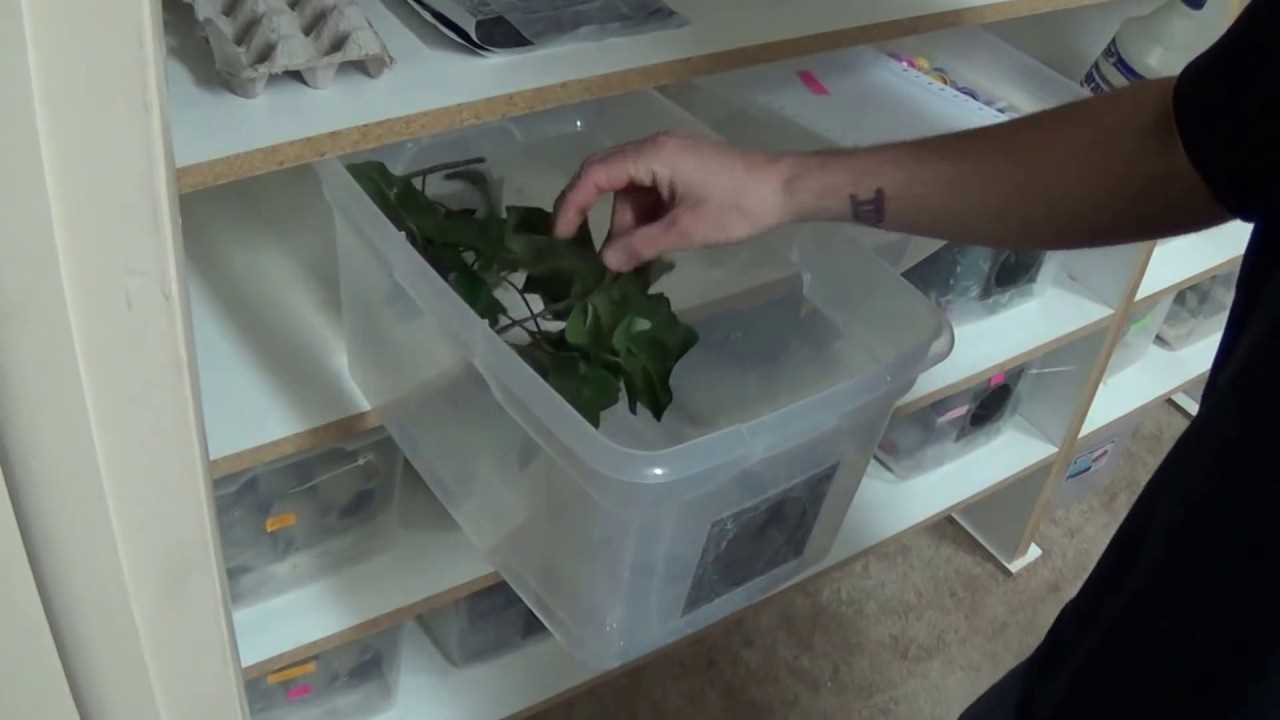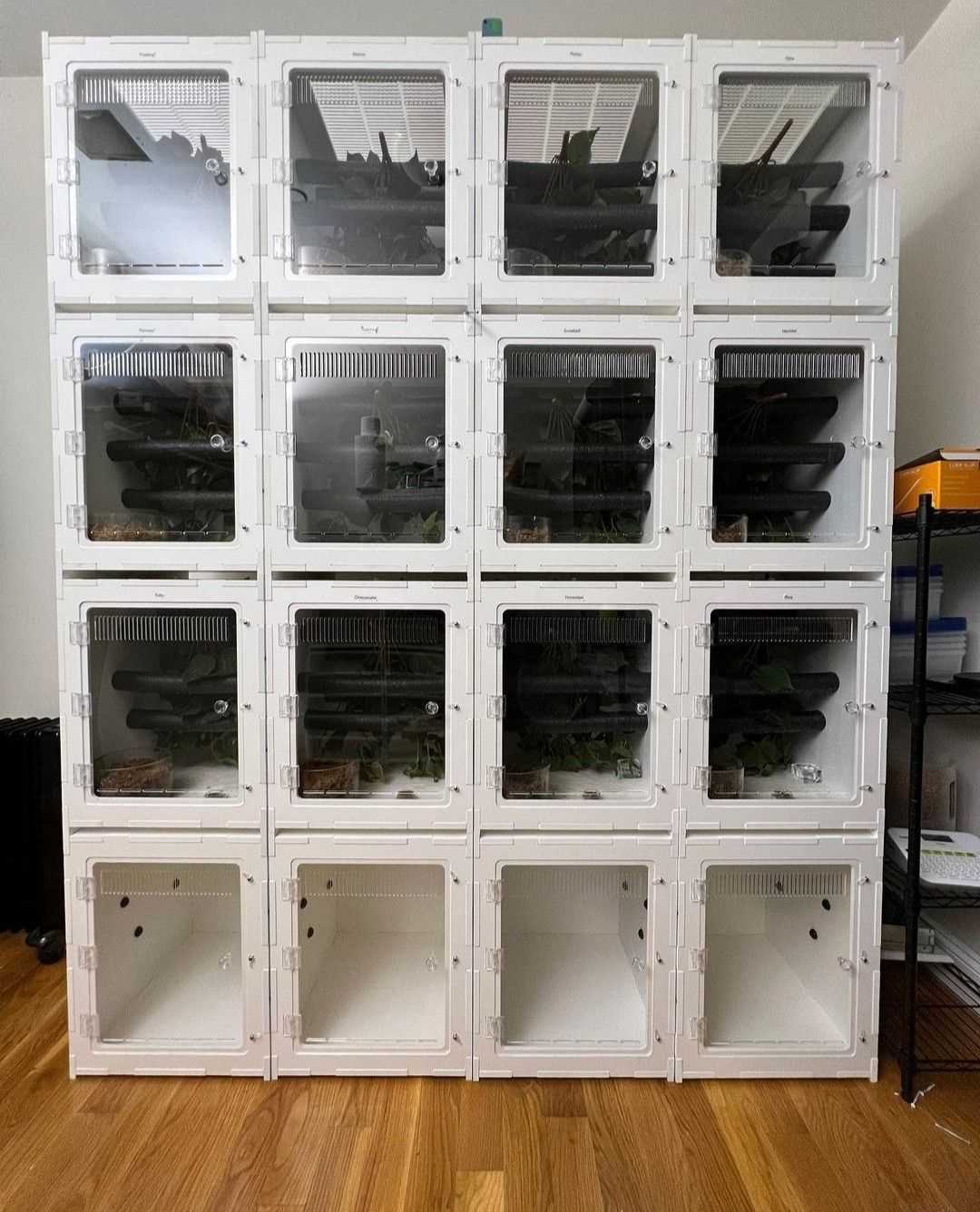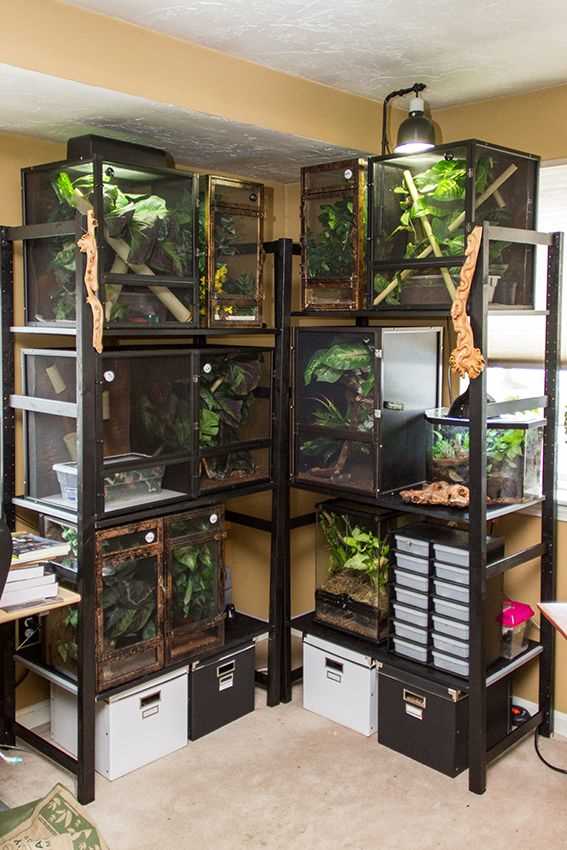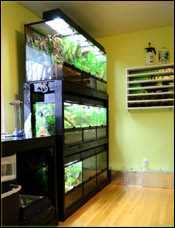
A crested gecko rack is a multi-level housing system that allows you to create a perfect habitat for your pet. It consists of stacked enclosures, providing ample space for your crested geckos to climb, explore, and hide. These racks are designed to optimize space, making them perfect for breeders housing multiple geckos. The individual compartments within the rack allow for easy monitoring and care of each gecko.
When selecting a crested gecko rack, it is essential to consider factors such as size, ventilation, and temperature control. The enclosure should be spacious enough to accommodate your gecko comfortably and provide room for climbing branches and hiding spots. Adequate ventilation is crucial to maintain a proper air circulation and prevent the build-up of excess humidity. Additionally, the ability to control the temperature inside the rack ensures that your gecko can thrive in an environment that mimics their natural habitat.
Overall, a crested gecko rack is the ultimate housing solution for keeping your crested geckos happy and healthy. Whether you are a dedicated breeder or a passionate reptile enthusiast, investing in a quality rack will provide your geckos with a secure and enjoyable living space. So, take the time to research and select the perfect crested gecko rack for your reptilian companions, and enjoy watching them thrive in their new home.
Choosing the Right Crested Gecko Rack

- Size: The size of the rack should be spacious enough to accommodate your crested gecko comfortably. It should allow for climbing and provide enough room for hiding spots and other environmental enrichments.
- Material: The material of the rack is important for the durability and safety of your crested gecko. Look for racks made of sturdy materials such as plastic or PVC, which are easy to clean and maintain.
- Ventilation: Good airflow is essential for the overall health and well-being of your crested gecko. The rack should have proper ventilation to prevent the build-up of moisture and odors.
- Accessibility: Choose a rack system that allows for easy access to your crested gecko and its enclosure. This will make feeding, cleaning, and handling much more convenient.
- Flexibility: Consider a rack that offers flexibility in terms of setup and customization. Look for adjustable shelves or removable dividers that can accommodate multiple geckos or different-sized enclosures.
- Security: The rack should provide a secure environment to prevent any escapes or injuries. Opt for a rack that has tight-fitting lids or doors and locking mechanisms.
By considering these factors, you can ensure that you choose the right crested gecko rack that meets your pet’s needs and provides a comfortable and safe housing environment. A well-designed and suitable rack system will contribute to the overall health and happiness of your crested gecko, whether you are keeping it as a pet or for breeding purposes.
Creating the right housing environment for your crested gecko is crucial for its overall wellbeing and health. A terrarium or enclosure, such as a crested gecko rack, provides a safe and comfortable space for your pet reptile to live and thrive.
The crested gecko rack is an ideal choice for housing these unique creatures. It offers a compact and efficient way to keep multiple geckos in separate compartments, making it particularly useful for breeding purposes. The rack system allows for easy monitoring and maintenance of each individual gecko’s habitat.
Proper housing involves more than just providing a suitable enclosure. It includes creating a habitat that closely mimics the natural environment of crested geckos. This includes temperature, humidity, lighting, and substrate selection.
One of the primary considerations is the terrarium size. The rack system should have enough compartments to accommodate the number of geckos you plan to keep. Each gecko should have a separate enclosure to prevent territorial disputes and stress.
Another critical aspect of proper housing is selecting the appropriate substrate for the gecko’s enclosure. The substrate should be absorbent and hold moisture to maintain the necessary humidity levels. Suitable options include coconut fiber, orchid bark, or a mix of both.
| Aspect | Requirement |
|---|---|
| Temperature | Maintain a daytime temperature of 72-82°F and a nighttime temperature of 68-74°F. |
| Humidity | Maintain a humidity level of 50-70% by misting the enclosure and using a hygrometer. |
| Lighting | Provide 12-14 hours of light per day using a combination of UVA and UVB bulbs. |
Creating a comfortable hideout is also essential for crested geckos. Offer hiding spots in the form of artificial plants, hollow logs, or commercial hides. These provide security and a sense of privacy for your gecko.
Setting Up the Ideal Environment for Your Crested Gecko
First and foremost, you will need to choose an appropriate rack or housing system for your crested gecko. There are various options available, including glass tanks, tubs, and specialized gecko racks. Consider factors such as size, ventilation, and ease of cleaning when selecting the right housing for your pet.
Temperature and humidity are two key factors to consider when setting up the ideal environment for your crested gecko. The temperature should be maintained between 72-78°F (22-26°C) during the day and slightly cooler at night. Use a heat mat or ceramic heat emitter to achieve the desired temperature gradient.
In terms of humidity, crested geckos require a humidity level of around 50-70%. This can be achieved by misting the enclosure daily and providing a water dish for your gecko to drink from and soak in. Use a hygrometer to monitor the humidity levels and make adjustments as needed.
Lastly, consider the lighting options for your crested gecko. While these reptiles are primarily nocturnal, they still benefit from having a day and night cycle. Use a low-wattage UVB bulb or a full-spectrum light to provide the necessary light for your gecko’s well-being.
By following these guidelines, you can create an ideal environment for your crested gecko. Remember to regularly clean and maintain the habitat to ensure the health and happiness of your pet.
Choosing the Appropriate Substrate for Your Crested Gecko Housing
Why is the substrate important?

The substrate serves multiple functions in a crested gecko enclosure. Firstly, it helps maintain the humidity levels required for your gecko’s health. Crested geckos thrive in environments with moderate humidity, around 60-70%. The substrate retains moisture, preventing excessive evaporation and ensuring the humidity levels stay within the ideal range.
Secondly, the substrate provides a soft and comfortable surface for your gecko to walk and climb on. Crested geckos have delicate skin, and rough surfaces can cause abrasions or injuries. A suitable substrate will offer a cushioned and secure footing for your gecko, allowing them to move freely and explore their enclosure without harm.
Additionally, the substrate enhances the visual appeal of the enclosure and creates a more natural habitat. With various substrate options available, you can select one that replicates the forest floor or tropical environment that crested geckos inhabit in the wild. This not only improves the overall aesthetics but also enhances the overall well-being of your gecko by providing a familiar and comforting environment.
What substrate options are suitable for crested geckos?
Paper Towels: Paper towels are a simple and low-cost substrate option suitable for young or sick crested geckos. They provide a clean and easy-to-maintain surface, ensuring that any waste is easily visible. However, they don’t provide the natural aesthetics or moisture retention of other substrates.
Sphagnum Moss: Sphagnum moss is another moisture-retaining substrate suitable for crested geckos. It provides a soft surface and helps maintain the desired humidity levels. Sphagnum moss also offers natural hiding spots and can support live plants if you wish to create a more naturalistic setup.
Leaf Litter: Leaf litter, such as dried and sterilized oak or magnolia leaves, can be used as a substrate or as an additional layer on top of another substrate. Leaf litter adds a natural appearance to the enclosure and offers hiding spots for your gecko.
Considerations when selecting the substrate
Moisture retention: Ensure the substrate retains moisture well, helping to maintain optimum humidity levels within the enclosure.
Mold and bacteria resistance: Select a substrate that is resistant to mold and bacteria growth to prevent potential health issues for your gecko.
Safety: Avoid substrates that can cause harm to your gecko, such as rough or sharp materials that may lead to abrasions or injuries.
Ease of cleaning: Choose a substrate that is easy to clean and replace, ensuring the maintenance of a clean and hygienic habitat for your gecko.
By carefully selecting the appropriate substrate for your crested gecko’s housing, you can provide them with a comfortable, attractive, and healthy environment that supports their natural behaviors and overall well-being.
Providing the Right Temperature and Humidity for Your Crested Gecko

Proper temperature and humidity levels are essential for the health and well-being of your crested gecko. These reptiles are native to New Caledonia, a tropical island, so it is crucial to replicate their natural environment in their housing.
Humidity is another crucial factor in crested gecko housing. These reptiles require moderate to high humidity levels, ideally between 50-70%. You can maintain the appropriate humidity by misting the enclosure with dechlorinated water once or twice a day. Additionally, placing a water dish in the enclosure will help to increase humidity levels.
A hygrometer is a must-have tool for monitoring both temperature and humidity levels and ensuring they are within the appropriate range. Regularly check the readings and make adjustments if necessary to maintain a comfortable and healthy environment for your crested gecko.
| Temperature | Humidity |
|---|---|
| Day: 72-78°F (22-25°C) | 50-70% |
| Night: Slightly cooler |
By providing the right temperature and humidity for your crested gecko, you are ensuring their overall well-being and promoting proper behavior and health. Remember to regularly monitor and adjust these levels to create an optimal habitat for your pet.
Creating a Comfortable Hideout for Your Crested Gecko
There are various options available for creating a hideout in the gecko’s enclosure. One popular choice is a secure reptile hide, which can be made of plastic or other materials. These hides are designed to simulate natural hiding spots and provide a sense of security for your gecko.
Placement of the hideout is also crucial. It is recommended to place the hideout in a cooler, shaded area of the enclosure, away from bright lights and direct heat sources. This allows the gecko to regulate its body temperature and feel secure in its hiding spot.
Decorating the Hideout
Adding some natural elements to the hideout can create a

I’m Lena Adams—a product of an unconventional upbringing in the African wilderness. My father, a daring explorer of African wildlife, sparked my fascination with reptiles, a passion that intertwined with the tragic loss of my mother during an expedition, leaving an indelible mark on my life. Driven to understand the creatures that captivated my parents, I embarked on my journey, sharing insights about reptiles, frogs, and lizards on my website. Through my explorations and conservation efforts, I honour my family’s legacy while seeking connections—to the creatures, nature, and the mother whose presence I yearn to understand.
